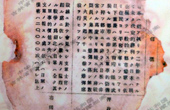China can learn from Cuba's preservation efforts
By Chen Weihua (China Daily) Updated: 2014-07-28 08:20Cuba, a socialist country, is building the Mariel development zone west of the capital Havana. The first such zone in the Caribbean island nation is wooing foreign investment from around the world.
Many say this development zone was inspired by the successful special economic zones in China, the first and the best known being Shenzhen bordering the Hong Kong Special Administrative Region. This former fishing village has become one of the largest and most modern cities in the nation.
Chinese have their fingers crossed for the Mariel experiment, part of Cuba's ongoing economic reform. China's experiences in the last more than 30 years of reform and opening-up could indeed offer some helpful lessons for Cuba.
The economic hardship in Cuba is alarming, reminding Chinese of their old days living under a planned economy and an economy of scarcity. In this way, Cuba needs to catch up in the breadth and depth of its economic reform, and Cubans in opening up their minds.
Being in Cuba for the third time, I have a strong feeling that Cuba could also offer China a few lessons.
For example, the 2014 Human Development Report, released by the United Nations Development Program on July 24, shows that Cuba ranked 44 among countries and regions in the world in the Human Development Index, while China was ranked far behind at 91.
This can be largely credited to Cuba's universal, fair and equal healthcare and education, which are free to every Cuban. By contrast, many Chinese are struggling to foot costly bills for education and medical care even though the nation's economy has become the world's second largest.
Cuba's relatively low corruption and pollution compared with China are also bright spots that have lifted it higher in the rankings. In the 2013 Corruption Perceptions Index, produced by Transparency International, Cuba ranked 63 while China was in 80th place.
What has impressed me most in Havana is the architecture and the preservation of the old buildings, achieved in spite of the country's economic hardship.
If Shanghai's Bund is proudly called an expo of architectural styles from around the world, then Havana, especially its old part known as Habana Vieja, is a living museum of wonderful architectural styles, from baroque and neoclassical to art deco and eclecticism.
Buildings, tens of thousands of them, often colorful, have been or are being restored to their original glamor since the work started in the 1970s.
In China's case, the old hutong neighborhoods in Beijing, have been largely wiped out. The same tragedy happened to the nontang, or old neighborhood, in Shanghai.
To achieve a rapid change every three years, Shanghai literally demolished its old parts in a way unprecedented in history. So while Shanghai's skyline may look modern and even futuristic, much of its history has been decimated with the tearing down of old buildings and neighborhoods.
Because of this, unlike in Cuba, there is no neighborliness in Shanghai and many Chinese cities these days as people now live in high-rise buildings that insulate people from each other.
Cuba has chosen a path of preserving its history that is laudable and one that China can learn from. Cuba is not repeating China's blunder in failing to preserve history. On the contrary, it has great vision and wants to preserve it for future generations.
What Chinese should admire about Cuba is the kind of patience massive urban preservation work requires, simply because once great old buildings are knocked down, they're gone forever. All the things that are rebuilt, no matter how magnificent or how much they look like the originals, are just fakes.
When I brought that question of preservation to a Cuban friend in Havana, he said that Cubans emphasize history a lot, one of the proofs being that the country's college entrance exam requires only three courses: math, history and Spanish.
China should take a leaf out of Cuba's book and rescue the few historical buildings and neighborhoods that still exist before they disappear under look-alike developments built by greedy developers and shortsighted government officials.
The author, based in Washington, is deputy editor of China Daily USA. Email; chenweihua@chinadailyusa.com










